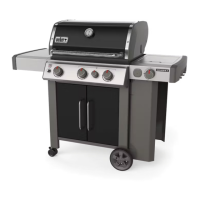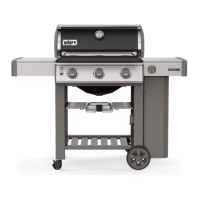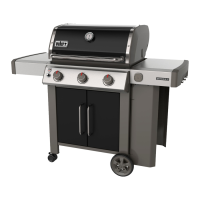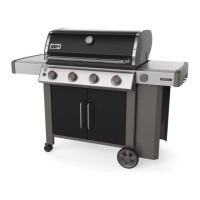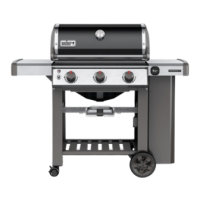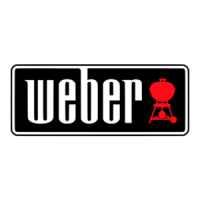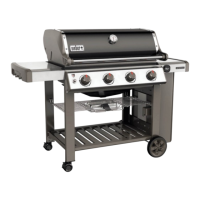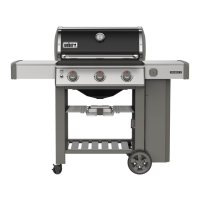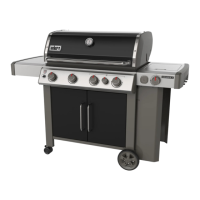8
Getting Started
Important Information about
LPGas & Gas Connections
What Is LP Gas?
Liquefied petroleum gas, also called LP, LP gas, liquid
propane, or simply propane or butane, is the flammable,
petroleum-based product used to fuel your grill. It is
a gas at moderate temperatures and pressure when
it is not contained. But at moderate pressure inside a
container, such as a tank, LP is a liquid. As pressure is
released from the tank, the liquid readily vaporizes and
becomes gas.
Safe Handling Tips For LP Tanks
• A dented or rusty liquid propane tank may be
hazardous and should be checked by your liquid
propane supplier. Donot use a liquid propane tank
with a damaged valve.
• Although your liquid propane tank may appear to be
empty, gas may still be present, and the tank should be
transported and stored accordingly.
• The LP tank must be installed, transported, and stored
in an upright, secure position. LP tanks should not be
dropped or handled roughly.
• Never store or transport the LP tank where
temperatures can reach 125° F (51.7° C) (the tank will
become too hot to hold by hand).
• Place dust cap on tank valve outlet whenever the tank
is not in use. Only install the type of dust cap on the
tank valve outlet that is provided with the tank valve.
Other types of caps or plugs may result in leakage of
propane.
LP Tank Requirements
• The tank must be approximately 18¼inches (46.35
cm) high and 12¼ inches (31.1 cm) in diameter with a
marked 20 pound (9.07 kg) LPG capacity or 47.6 pound
(21.6 kg) water capacity as stated by the manufacturer.
Other tanks may be acceptable provided they are
compatible with the grill retention means (tank scale).
• The tank used must be constructed and marked
in accordance with the Specifications for LP gas
Cylinders of the U.S. Department of Transportation
(D.O.T.); or the Canadian Standard for Cylinders,
Spheres and Tubes for Transportation of Dangerous
Goods and Commission, CAN/CSA-B339, as applicable.
• Tanks must be provided with a listed OPD (Overfilling
Prevention Device) and a Type 1 (CGA 810) tank
connection. The tank connection must be compatible
with the grill connection.
• The tank must include a collar to protect the tank
valve.
• Tanks must have a D.O.T. certification (A), and a testing
date (B) that is within five years of current use.
What is a Regulator?
Your gas grill is equipped with a pressure regulator,
which is a device to control and maintain uniform gas
pressure as gas is released from the LP tank.
Regulator Requirements
• The regulator and hose assembly supplied with this
grill must be used. This regulator has a flow limiting
device built into the unit that will restrict the flow of
gas in the event that a leak is detected.
• Replacement regulator and hose assemblies must be
as specified by Weber-Stephen Products LLC (UL-listed
Type 1 (CGA 810) tank connection device as described
in the latest edition of ANSI Z21.81).
A
B
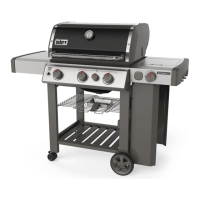
